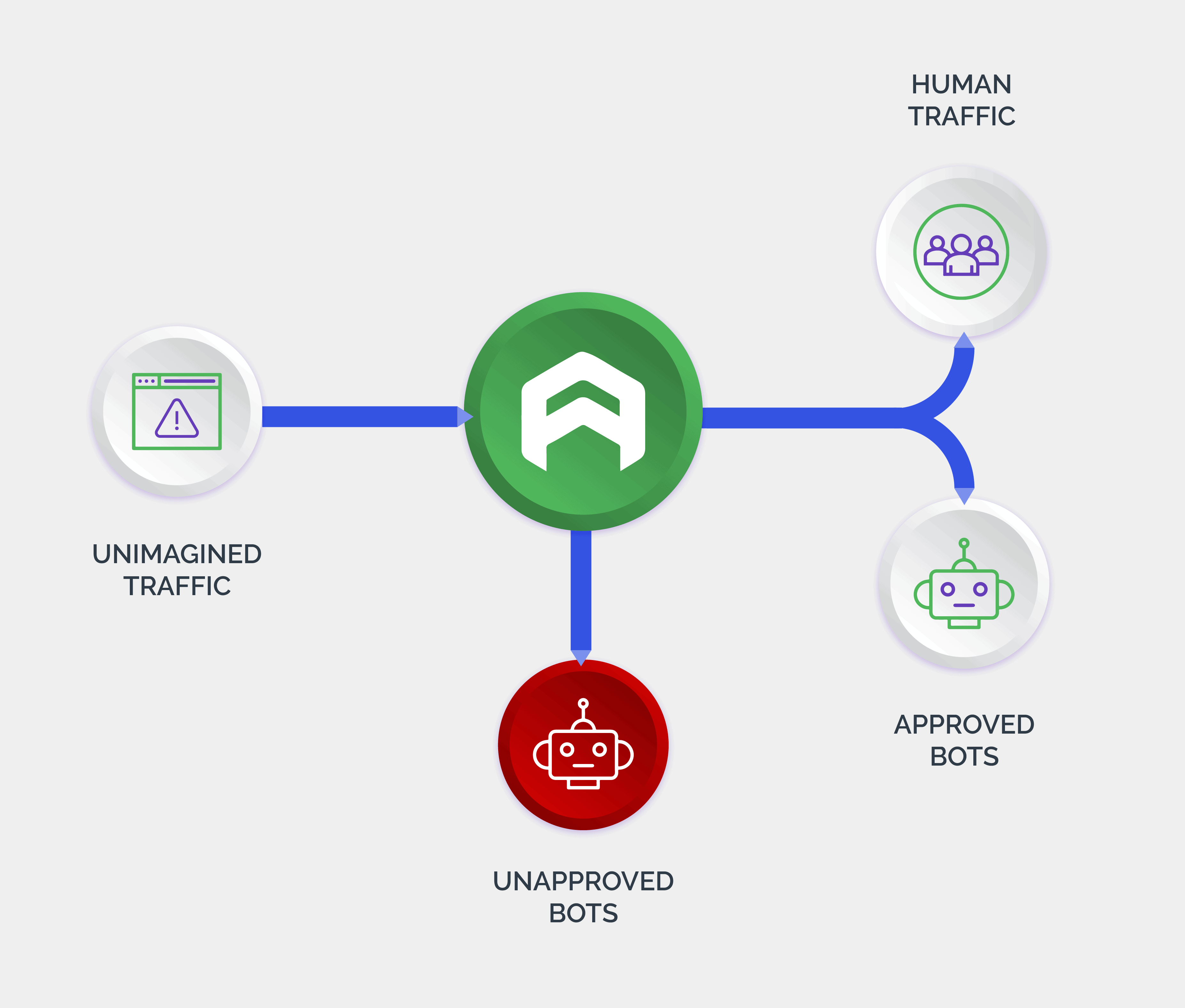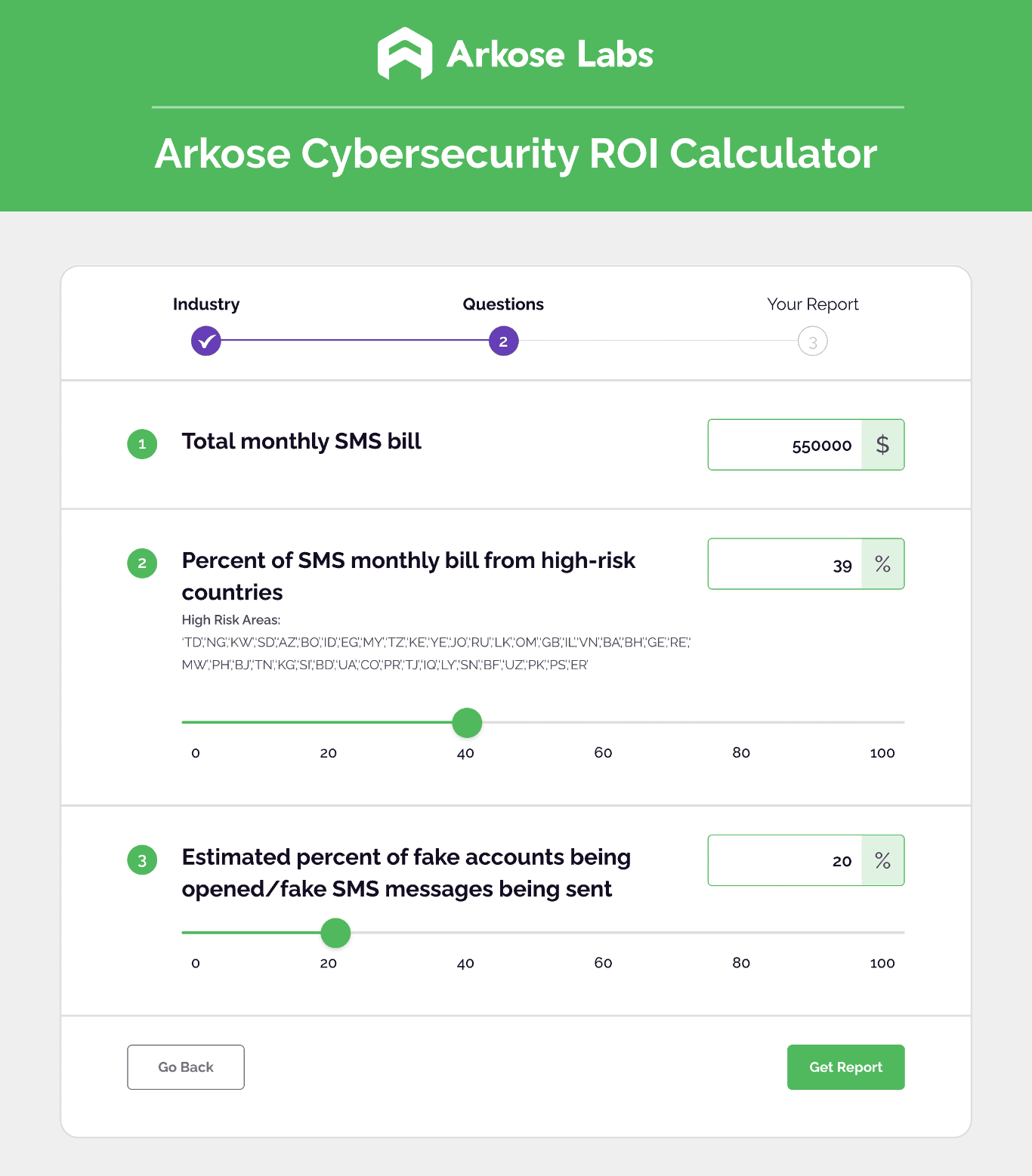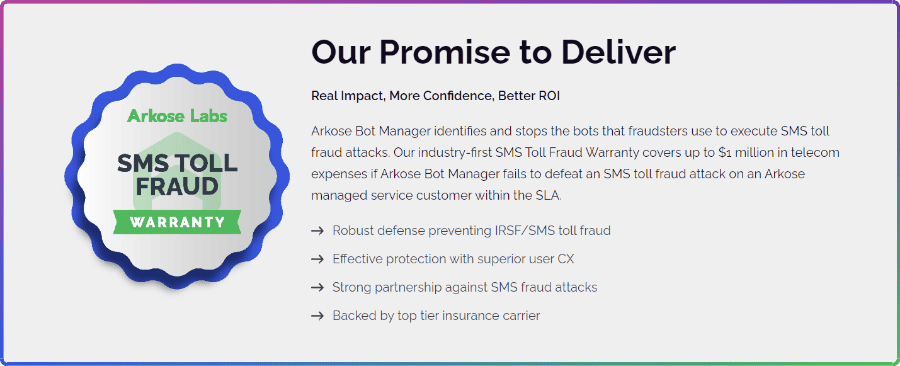Defining Artificially Inflated Traffic (AIT) Fraud
AIT fraud, short for artificially inflated traffic fraud, occurs when bad actors use bots and automation to generate large volumes of fake traffic through apps or websites. Using bot-driven fake account creation, these cyberattackers target digital businesses to trigger sending out SMS OTP (one-time password) to mobile numbers. When done repeatedly and at scale through automation, attackers – often in collusion with mobile network operators (MNOs) and other telecoms – are able to generate large volumes of fake SMS traffic, which allows each party to make huge profits.
By producing substantial traffic through AIT, attackers can empower SMS toll fraud even further. It can cause significant financial and reputational damage to digital businesses, jeopardizing their growth plans. And since AIT fraud transcends geographical locations, it is a global challenge and requires collaboration to tackle effectively.
Businesses need a thorough understanding of AIT fraud in the digital ecosystem to be able to recognize potential threats and deploy proactive fraud prevention mechanisms. Here’s a look at the many aspects of artificially inflated traffic fraud, with particular focus on how it relates to SMS toll fraud.
Key Terms Associated with AIT Fraud
To understand how artificially inflated traffic fraud works, it is helpful to be familiar with some common AIT-related terms:
- Click Farms: Organized groups of low-wage individuals, generally from low-income economies, who are hired to impersonate genuine traffic by registering accounts with online businesses, manually clicking on ads, streaming music, watching videos, filling out online forms, or engaging with websites in any other form.
- Bot Traffic: Automated, non-human traffic that is generated by bots to mimic human behavior online and used to create fraudulent clicks, views, and other interactions at scale.
- Artificial Impressions: Fabricated or fake views, clicks, or interactions on digital content with the goal of manipulating metrics, deceiving advertisers, or inflating the perceived popularity of content.
- Click Fraud: Where perpetrators use bots, scripts, or click farms, comprising low-paid individuals, to continuously click on ads, links, and other content. Here the goal is to increase the number of clicks on an ad, link, or a content piece such that the business pays more for the higher volumes of interactions.
- View Fraud: Similar to click fraud, a tactic where attackers target ads and web content to generate fake views. The false viewership numbers are used to show that the content is gaining popularity.
- Impression Fraud: A scheme whereby by fraudulently increasing the number of times an ad or content is displayed (impressions created), bad actors boost the impression statistics, which means businesses pay for fake impressions that were never really created.
- Conversion Fraud: The act of simulating actions that constitute a conversion, such as completing a purchase or filling out a web form by impersonating genuine users, manipulating cookies, or through using bots, scripts, and conversion farms. The goal of conversion fraud is to increase the conversion metrics by creating an illusion of user engagement.
Techniques and Methods Used to Launch AIT Fraud
As mentioned earlier, attackers target apps and web forms to trigger application-to-person (A2P) messaging to execute SMS toll fraud and other types of artificially inflated traffic fraud. Using bots and scripts, attackers can easily attack web forms and apps. The most common methods used for artificially generated traffic include:
- Click Farm Fraud: This attack generally uses multiple devices, such as smartphones, tablets, computers, and internet connections, to simulate a diverse range of users and make the interactions appear more authentic. They may use bots for repetitive actions and engage individuals from several geographical locations to create an appearance of global engagement. Furthermore, by using proxy servers to mask their actual location and timing their actions to mimic legitimate user behavior, these attackers attempt to avoid detection. As a result of this fraudulent activity, engagement metrics get bloated, giving the impression that the content is receiving genuine user interactions. However, this fake engagement does not result in genuine conversions.
- Bot Networks: Bot networks are a part of a larger fraud ecosystem that facilitates collaboration among several parties who power illicit activities and profit from them. These networks play a significant role in artificially inflated traffic (AIT) fraud by automating the generation of fake clicks, views, and other interactions on online content. Being readily and cheaply available, bots make it super easy for attackers to scale up the attacks with minimal investment. Since bots can operate continuously on a 24x7 basis and without a break, perform repetitive tasks with precision, simulate a range of interactions, target specific content, and quickly generate large volumes of bot-driven traffic, bot networks allow attackers to inflate engagement metrics quickly. Further, by using proxy servers and IP rotation, bot networks can emulate traffic generation from diverse geographic locations and obfuscate their origins.
- Domain Spoofing: This is a common method attackers use to deceive advertisers into placing their ads or content on a fraudulent website or app by misrepresenting their identity. Attackers manipulate the domain or app name to resemble the trusted names. They then impersonate premium inventories to place fake bid requests and solicit bids at higher prices from advertisers. Often, the ads or the content either end up being displayed on sites with inappropriate content or not getting displayed at all. The fake referral traffic received from spoofed domains artificially inflates the impressions. To protect from domain spoofing, publishers can use ads.txt, app-ads.txt, or similar technology to publicly declare the authorized sellers of their ad inventory, choose only trusted and transparent supply partners, use blockchain technology to trace the origin of ad impressions, employ third-party verification services to validate the legitimacy of ad placements and traffic sources, and constantly monitor ad placements, traffic patterns, and engagement metrics to identify anomalies indicative of domain spoofing.
AIT Has Far-Reaching Impact and Consequences
As detrimental as AIT fraud is to businesses, it is attractive to fraudsters. This is because not only is AIT fraud difficult to identify, but also since OTPs are not considered spam, they can bypass MNO firewalls – enabling bad actors to generate illegitimate non-human traffic.
If left unchecked, artificially generated traffic fraud can have negative effects on the entire digital ecosystem. It can inflict direct and indirect financial losses on businesses and MNOs and put user account security at risk. Affected businesses incur costs due to operational disruption, loss of productivity, data recovery costs, efforts spent to secure their systems, and more. They also run the risk of repeat attacks, data breaches, supply chain disruptions, and regulatory non-compliance.
Artificial inflation of traffic increases the financial burden on businesses who end up paying for fraudulently inflated numbers of clicks, views, and engagements. This not only wastes resources but also leads to ineffective content strategies, misguided ad spends, and diminished overall impact of marketing campaigns.
Through fake engagements, AIT fraud undermines the trust between various stakeholders in the digital business ecosystem. Platforms that suffer reputational damage also risk loss of revenue as businesses may hesitate from using their services, leading to reduced platform engagement.
AIT fraud also raises doubts about the use of SMS text messages as a channel for business messaging or two factor authentication (2FA), which many businesses use to send verification codes or OTPs while onboarding new users, verifying returning users, or facilitating password resets.
How Businesses Can Detect and Prevent AIT Fraud
To say that it is imperative to identify and stop AIT fraud as early as possible is an understatement. Given the scale of losses that businesses stand to suffer due to artificially inflated traffic fraud, it is critical that businesses deploy effective fraud detection and prevention measures and come together to protect the interests of businesses and consumers alike.
Some of the ways businesses can identify and thwart AIT fraud are:
- Bot Detection and CAPTCHA: Differentiating between genuine and bot traffic is the first step in stopping AIT fraud. Businesses can consider combining multiple techniques and layers of protection for identity proofing and a more comprehensive bot mitigation. This includes using CAPTCHAs to verify that the user interacting with the system is a human. They can also use behavioral biometrics, behavioral analysis, device fingerprinting, mouse movement pattern analysis, keyboard dynamics, cookies analysis, and monitoring the time between interactions to detect bot behavior. In addition, businesses can implement user authentication methods such as email verification, SMS verification, or multi-factor authentication (MFA) to ensure that users are real individuals.
- Analytics Tools: With its ability to analyze data patterns, detect anomalies, and flag suspicious behaviors, fraud analytics software can play a key role in identifying artificially inflated traffic fraud. These tools can help businesses detect irregularities in engagement metrics, often indicative of fraudulent activities.
- Machine Learning Algorithms: Machine learning algorithms can help detect artificially inflated traffic (AIT) fraud using historical data, learning from it and identifying emerging patterns of malicious behavior. With the right quality of data, feature engineering, model selection, and continuous refinement, machine learning algorithms can be used for anomaly detection, behavioral analysis, feature analysis, IP and geolocation analysis, real-time monitoring, predictive analysis, and detecting new and sophisticated forms of fraud. Since machine learning can analyze interactions across multiple devices, it can help detect inconsistencies and discrepancies that may indicate fraudulent activities.
- IP Blocking: A simple, cost-effective, and commonly used method to immediately prevent automated bot attacks, IP blocking helps prevent malicious traffic from accessing a website, app, or a digital platform. This not only protects the digital platform against automated bot attacks but also optimizes performance by reducing the strain on the digital resources. IP blocking involves using server logs, intrusion detection systems, or third-party intelligence services to identify suspicious IP addresses and blocking them using web application firewalls (WAFs). However, to prevent blocking genuine users while restricting the number of requests a specific IP address can make within a certain time period, businesses typically use rate limiting instead of outright blocking.
- Ad Fraud Solutions: There are several software programs that have been designed to combat AIT fraud. Using advanced digital technologies, analytics, and machine learning, these tools can ably assist businesses to accurately detect fraud, reduce false positives, and enhance protection from AIT fraud. Depending on their unique needs, organizations must select solutions that align with their business objectives.
AIT Fraud Raises Legal and Ethical Considerations
Artificially inflated traffic (AIT) fraud can cause significant legal and ethical headaches for businesses. Since it exposes businesses and consumers to data breach, spam, phishing, intellectual property infringement and other types of threats, it can result in violation of regulations and lead to penal action and hefty fines. AIT fraud involves extensive use of bots and automated scripts to interact with websites and apps, which can expose consumer data to web scraping, resulting in infringement of users’ privacy. By manipulating engagement metrics, AIT can potentially violate fraud and deceptive practices laws in various jurisdictions.
AIT gives unscrupulous businesses a competitive edge over the others, which means honest businesses receive low or no visibility. It is essential that all stakeholders in the digital ecosystem collaborate to address these legal and ethical considerations by ensuring transparency, adherence to industry standards, and promoting ethical behavior.
The Arkose Labs Approach to Preventing AIT and SMS Toll Fraud
Combining its innovative approach with cutting-edge technology, adaptive algorithms, and a robust understanding of evolving threat landscapes, Arkose Bot Manager protects businesses from large-scale bot attacks and emerging risks.

Arkose Labs is proud of its revolutionary challenge-response authentication mechanism, Arkose MatchKey, which not only deters automated bots but also creates an engaging user experience. It uses targeted friction to allow only genuine human users to continue with their onward digital journey, thereby minimizing the risk of artificially inflated traffic fraud.
To reduce false positives, Arkose Labs uses adaptive authentication, which analyzes digital parameters and interaction patterns to accurately differentiate between legitimate users and bad actors attempting artificially inflated traffic or SMS fraud. Using AI and machine learning to detect anomalies in user behavior, Arkose Labs can quickly identify SMS requests in fast succession or abnormal traffic spikes. Further, using behavioral biometrics and analyzing subtle nuances in interaction, such as typing speed, mouse movements, and touch gestures, Arkose Labs adds an additional layer of protection against AIT fraud by enabling businesses to take appropriate counteraction.
Tapping into its global network of partners across geographical locations, Arkose Labs benefits from real-time threat intelligence, which helps identify emerging patterns and deliver long-term protection from evolving threats, including artificially inflated traffic fraud and SMS pumping fraud. What’s more, Arkose Labs backs its promise of fighting automated SMS fraud attempts, with an industry-first $1M dollar warranty.
Still have questions about artificially inflated traffic fraud and how to stop it? Learn how to protect yourself from SMS toll fraud or visit our SMS Toll Fraud Reference Guide.


